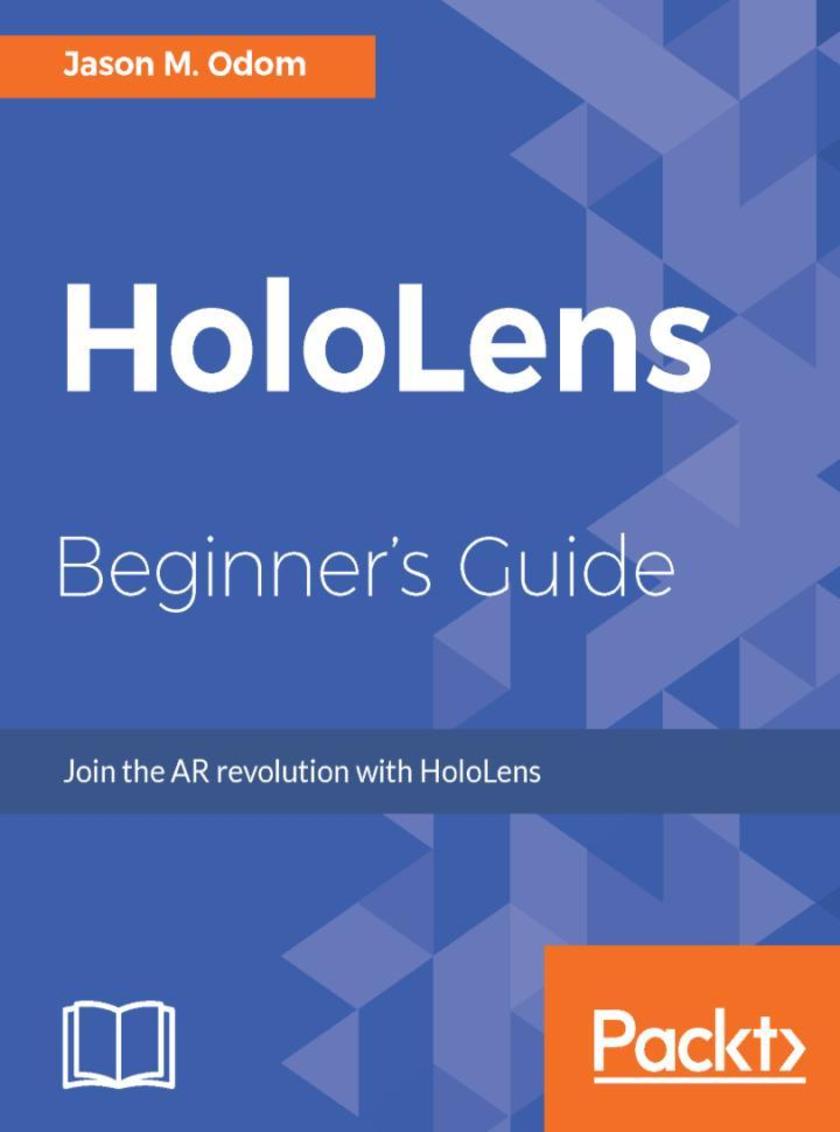
HoloLens Beginner’s Guide
¥90.46
"Key Features?Start developing immersive and interactive apps for Microsoft HoloLens ?Explore the Windows Universal Development platform for HoloLens development ?Leverage the full set of HoloLens sensors to create mesmerizing apps"
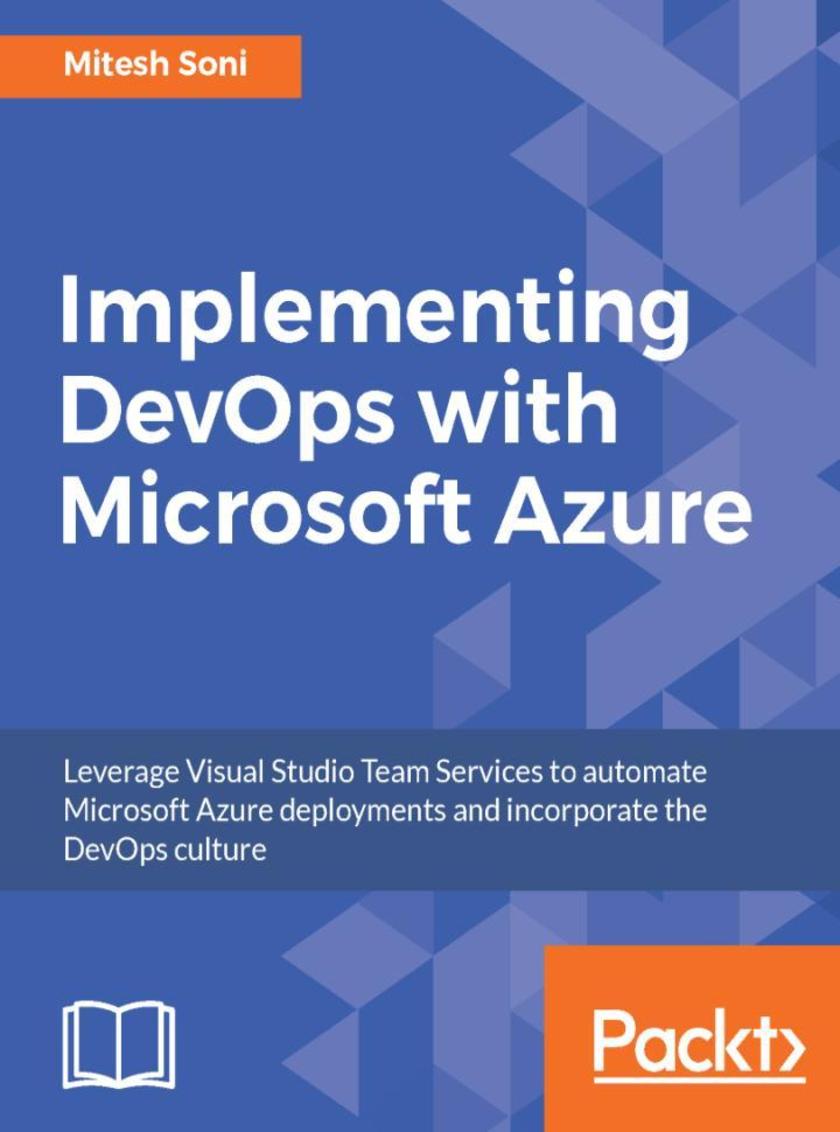
Implementing DevOps with Microsoft Azure
¥90.46
"Accelerate and Automate Build, Deploy, and Management of applications to achieve High Availability. About This Book ?This guide highlights tools that offer development and deployment environments for application services ?Secure and continuously monitor your web application in order to make it highly available ?Use Visual Studio Team Services for Continuous Integration and Continuous Development to expedite your application life cycle management process ?Use Microsoft Azure App Services (Azure Web Apps / Azure Websites), PaaS offering from Microsoft to deploy web application Who This Book Is For This book is for DevOps engineers, system administrators, and developers (.net) who want to implement DevOps for their organization. You do not need to have any knowledge of VSTS or Azure App Services (Azure Web Apps / Azure Websites). What You Will Learn ?Explore the features of PaaS and aPaaS in DevOps ?Use Visual Studio Team Services (VSTS) to manage versions of code and integrating VSTS with Eclipse IDE ?Understand and configure Continuous Integration in VSTS ?Review Unit Test Execution for Automated Testing ?Create different environments that can be used to continuous deploy a web application ?Configure Roll-based Access to enable secure access for Azure Web Apps ?Create and configure the App Service Environment to enhance security ?Understand the execution of the end-to-end automation process ?Conduct Performance Testing using JMeter ?Discover the different monitoring options available in Microsoft Azure Portal In Detail This book will teach you all about the Visual Studio Team Services and Microsoft Azure PaaS offerings that support Continuous Integration, Continuous Delivery, Continuous Deployment, and execution in the cloud with high availability, disaster recovery, and security. You will first be given a tour of all the concepts and tools that Microsoft Azure has to offer and how these can be used in situations to cultivate the DevOps culture. You'll be taught how to use and manage Visual Studio Team Services (VSTS) and about the structure of the sample application used throughout the book. You will become familiar with the nitty gritty of Continuous Integration and Continuous Development with VSTS and Microsoft Azure Apps. You will not only learn how to create App service environments, but also how to compare Azure Web Apps and App Service Environments to deploy web applications in a more secure environment. Once you have completed Continuous Integration and created the Platform for application deployment, you will learn more about the final stepping stone in achieving end-to-end automation using approval-based Continuous Delivery and Deployment. You will then learn about Continuous Monitoring, using the monitoring and notification options provided by Microsoft Azure and Visual Studio Team Services. Style and Approach This book is an easy-to-follow guide filled with examples and real-world applications for gaining an in-depth understanding of Microsoft Azure and Visual Studio. This book will help you leverage Microsoft Azure and Visual Studio using real-world examples. "
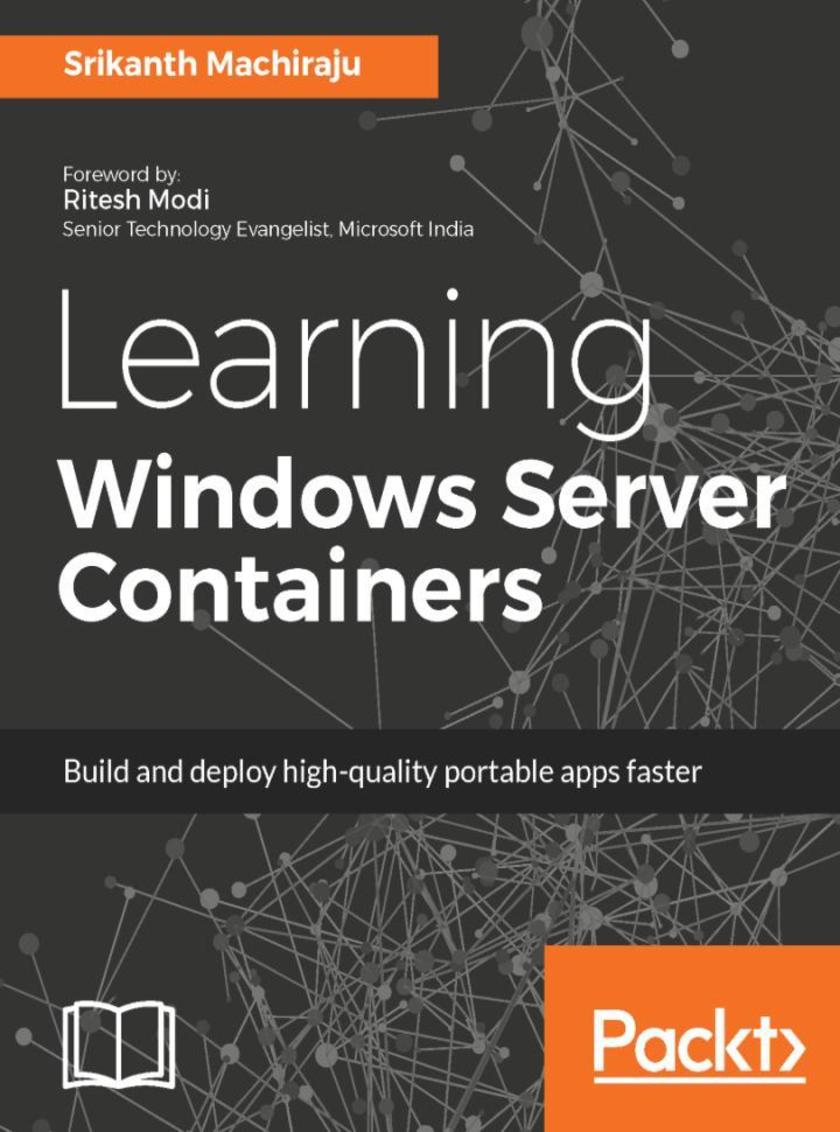
Learning Windows Server Containers
¥90.46
"About This Book ?Discover the secret to building highly portable apps that run on any machine with Windows Server 2016 anywhere, from laptops, desktop servers, and public or private clouds, without any changes to the code ?Build your company cost-effective, container-based apps that support large-scale, virtual cloud environments ?The most up-to-date help on the market, offering developers expert guidance in building and shipping high-quality apps, and also helping admins create infrastructure that's simple to maintain Who This Book Is For This book is for application developers with a basic programming knowledge of C#, ASP.NET, and PowerShell. IT Administrators or DevOps engineers with basic PowerShell experience can benefit by extending their learning to use PowerShell to manage containers on Windows environments and use additional management tools. What You Will Learn ?Build and deploy ASP.NET web applications as Windows Containers on Windows 10 (Desktop) and Azure using Visual Studio 2015, Docker, and PowerShell ?Build and manage custom images using Windows Server Core base OS image and Docker CLI, publish images to Docker, tag images, author Docker files, and so on ?Create enterprise-scale, production-grade container environments using Redis Cache containers and SQL Server containers with storage volumes, set up custom container networks, continuous integration, and deployment pipelines using VSTS, Azure, and Git ?Deploy a composite container environment using Docker Compose on Windows ?Learn to build applications using Microsoft's thinnest server platform - Nano Servers. Build custom Nano Server images and Nano Containers using Windows PowerShell and "
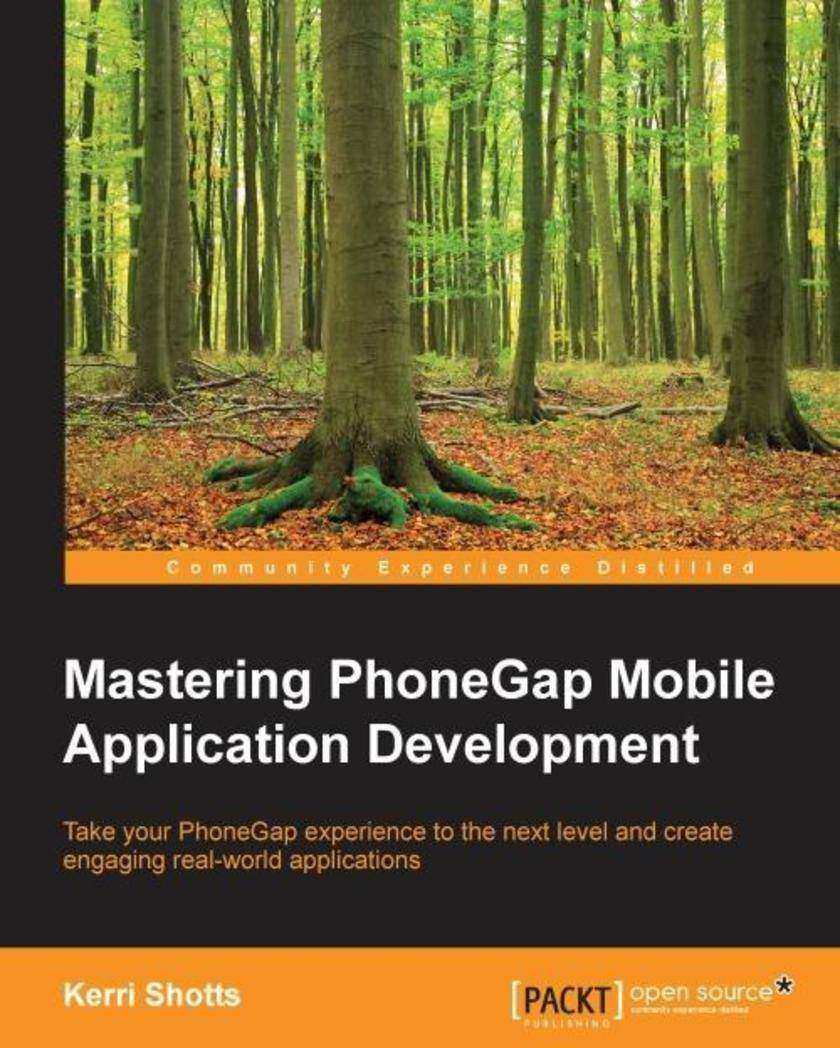
Mastering PhoneGap Mobile Application Development
¥90.46
Take your PhoneGap experience to the next level and create engaging real-world applicationsAbout This BookCreate a useful PhoneGap workflow for larger projects in order to simplify and manage the development processUse third-party plugins, IndexedDB, and SQLite for PhoneGap to develop large-scale, data-driven, and highly accessible applicationsA pragmatic guide to construct top-notch large-scale applications using PhoneGapWho This Book Is ForIf you have created simple applications using PhoneGap in the past and now want to take your workflow and apps to the next level, this book will help you reach your goals. You should have a good working knowledge of HTML, CSS, and JavaScript, and prior experience with PhoneGap.What You Will LearnConstruct build workflows that simplify complex application developmentIntegrate the next version of JavaScript to simplify your codeCreate accessible hybrid applicationsPersist and query data using third-party database pluginsCreate your own PhoneGap plugins for your unique use casesCreate icons and splash screens suitable for submission to app storesPublish your app to the Google Play and Apple iTunes storesIn DetailPhoneGap is a useful and flexible tool that enables you to create complex hybrid applications for mobile platforms. In addition to the core technology, there is a large and vibrant community that creates third-party plugins that can take your app to the next level.This book will guide you through the process of creating a complex data-driven hybrid mobile application using PhoneGap, web technologies, and third-party plugins.A good foundation is critical, so you will learn how to create a useful workflow to make development easier. From there, the next version of JavaScript (ES6) and the CSS pre-processor SASS are introduced as a way to simplify creating the look of the mobile application. Responsive design techniques are also covered, including the flexbox layout module. As many apps are data-driven, you'll build an application throughout the course of the book that relies upon IndexedDB and SQLite. You'll also download additional content and address how to handle in-app purchases. Furthermore, you’ll build your own customized plugins for your particular use case. When the app is complete, the book will guide you through the steps necessary to submit your app to the Google Play and Apple iTunes stores.Style and approachThis book is a step-by-step guide, in which the concepts covered are explained with the help of hands-on examples
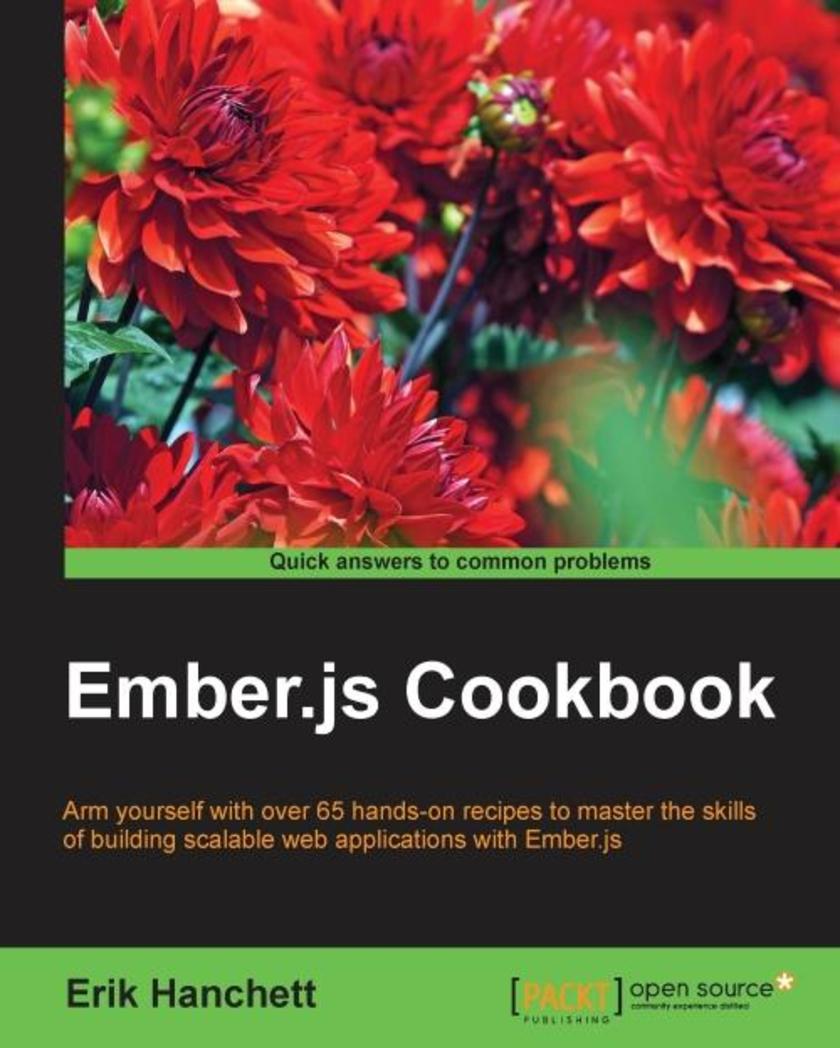
Ember.js Cookbook
¥90.46
Arm yourself with over 65 hands-on recipes to master the skills of building scalable web applications with Ember.jsAbout This BookThis book is your one-stop solution to the key features of Ember.js. Become skilled in the art of building web-apps in a fraction of the code you'd write in other frameworks.Build JavaScript apps that don't break the web! Our 100 recipes will make this a cakewalk for you!This books makes learning Ember.js easy by breaking down each topic into simple-to-understand recipesWho This Book Is ForAnyone who wants to explore Ember.js and wishes to get hands on making sophisticated web apps with less coding will find this book handy. Prior experience in Coding and familiarity with JavaScript is recommended. If you’ve heard of Ember.js or are just curious on how a single-page application framework works, then this book is for you.What You Will LearnSkip the boilerplate code with Ember CLI generatorsCreate a component with actions and eventsSet up a model with Ember Data using fixture dataCreate several different types of test cases and run themManage and set up user authentication using Ember Simple AuthAdd animated transitions to your app with Liquid FireSet up a service and initializer with dependency injectionCreate a working chat applicationSet up an Ember Service and initializer with dependency injectionCreate a working chat applicationIn DetailEmber.js is an open source JavaScript framework that will make you more productive. It uses common idioms and practices, making it simple to create amazing single-page applications. It also lets you create code in a modular way using the latest JavaScript features. Not only that, it has a great set of APIs to get any task done. The Ember.js community is welcoming newcomers and is ready to help you when needed.This book provides in-depth explanations on how to use the Ember.js framework to take you from beginner to expert. You’ll start with some basic topics and by the end of the book, you’ll know everything you need to know to build a fully operational Ember application.We’ll begin by explaining key points on how to use the Ember.js framework and the associated tools. You’ll learn how to effectively use Ember CLI and how to create and deploy your application. We’ll take a close look at the Ember object model and templates by examining bindings and observers. We’ll then move onto Ember components, models, and Ember Data. We’ll show you examples on how to connect to RESTful databases. Next we’ll get to grips with testing with integration and acceptance tests using QUnit. We will conclude by covering authentication, services, and Ember add-ons. We’ll explore advanced topics such as services and initializers, and how to use them together to build real-time applications.Style and approachEach recipe in this book will make it that much easier to understand Ember.js. Recipe after recipe, you will learn the concepts of Ember.js by following the simple step-by-step processes
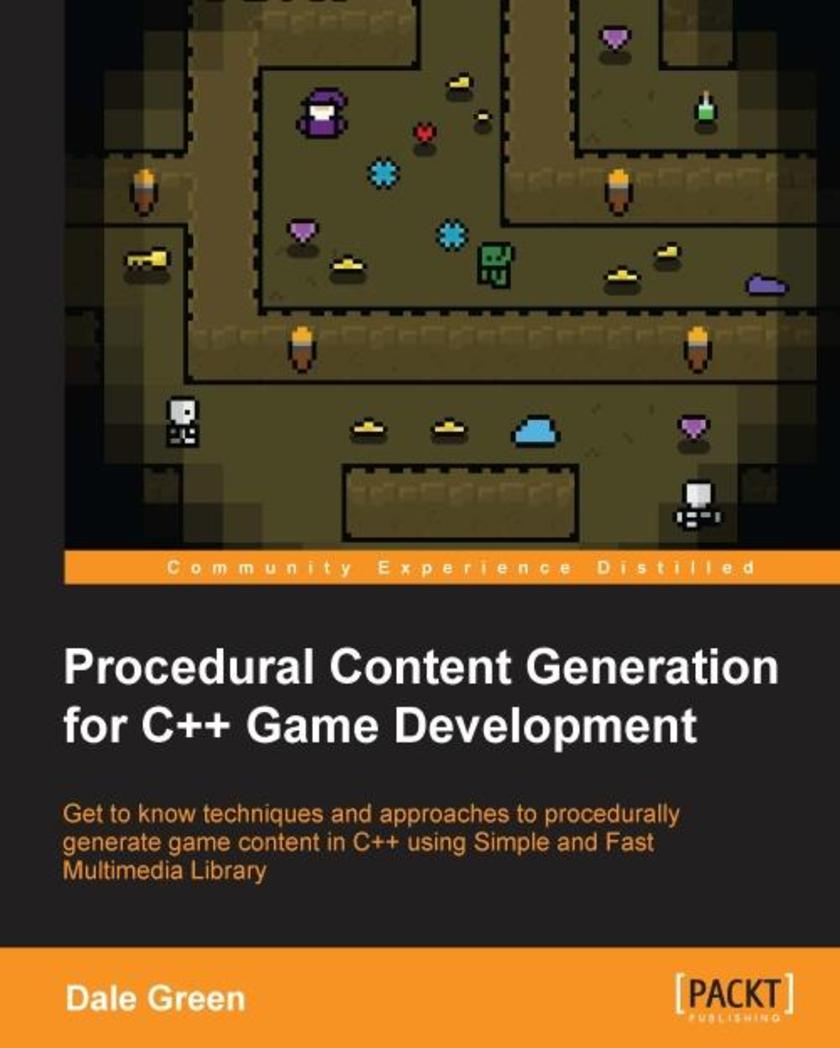
Procedural Content Generation for C++ Game Development
¥90.46
Get to know techniques and approaches to procedurally generate game content in C++ using Simple and Fast Multimedia LibraryAbout This BookThis book contains a bespoke Simple and Fast Multimedia Library (SFML) game engine with complete online documentationThrough this book, you’ll create games that are non-predictable and dynamic and have a high replayability factorGet a breakdown of the key techniques and approaches applied to a real game.Who This Book Is ForIf you are a game developer who is familiar with C++ and is looking to create bigger and more dynamic games, then this book is for you. The book assumes some prior experience with C++, but any intermediate concepts are clarified in detail. No prior experience with SFML is required.What You Will LearnDiscover the systems and ideology that lie at the heart of procedural systemsUse Random number generation (RNG) with C++ data types to create random but controlled resultsBuild levels procedurally with randomly located items and eventsCreate dynamic game objects at runtimeConstruct games using a component-based approachAssemble non-predictable game events and scenariosOperate procedural generation to create dynamic content fast and easilyGenerate game environments for endless replayabilityIn DetailProcedural generation is a growing trend in game development. It allows developers to create games that are bigger and more dynamic, giving the games a higher level of replayability. Procedural generation isn’t just one technique, it’s a collection of techniques and approaches that are used together to create dynamic systems and objects. C++ is the industry-standard programming language to write computer games. It’s at the heart of most engines, and is incredibly powerful. SFML is an easy-to-use, cross-platform, and open-source multimedia library. Access to computer hardware is broken into succinct modules, making it a great choice if you want to develop cross-platform games with ease.Using C++ and SFML technologies, this book will guide you through the techniques and approaches used to generate content procedurally within game development.Throughout the course of this book, we’ll look at examples of these technologies, starting with setting up a roguelike project using the C++ template. We’ll then move on to using RNG with C++ data types and randomly scattering objects within a game map. We will create simple console examples to implement in a real game by creating unique and randomised game items, dynamic sprites, and effects, and procedurally generating game events. Then we will walk you through generating random game maps. At the end, we will have a retrospective look at the project.By the end of the book, not only will you have a solid understanding of procedural generation, but you’ll also have a working roguelike game that you will have extended using the examples provided.Style and approachThis is an easy-to-follow guide where each topic is explained clearly and thoroughly through the use of a bespoke example, then implemented in a real game project.
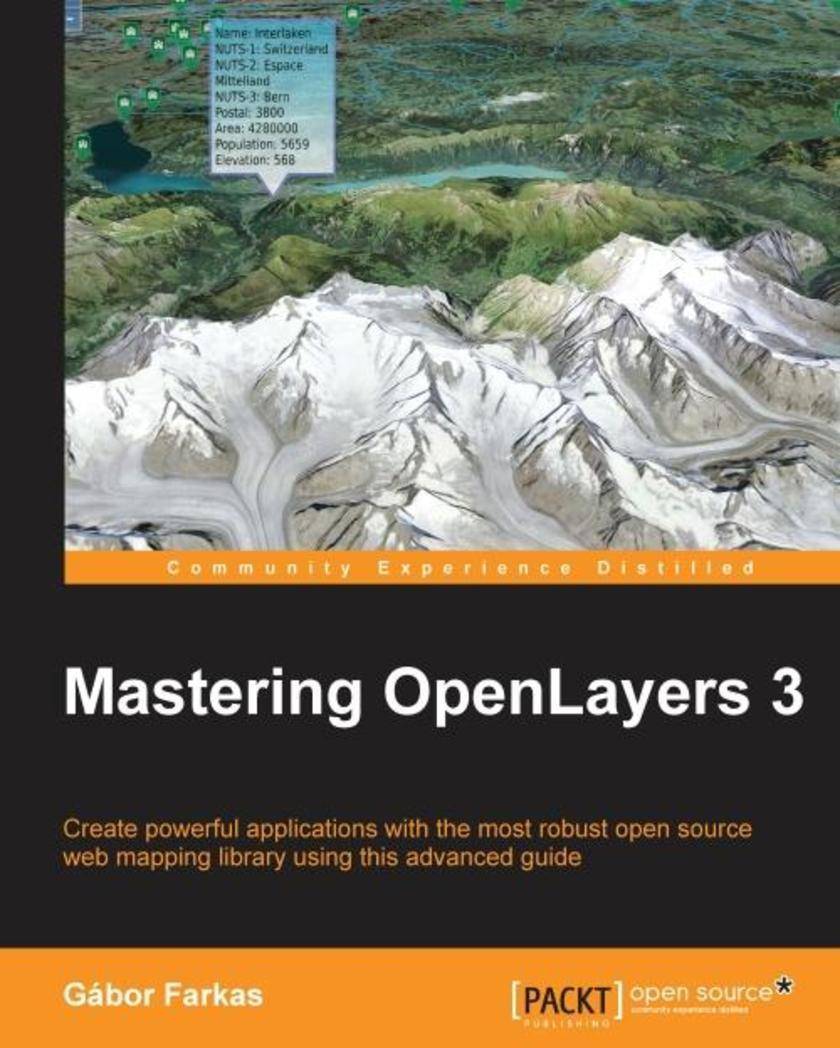
Mastering OpenLayers 3
¥90.46
Create powerful applications with the most robust open source web mapping library using this advanced guideAbout This BookDevelop responsive and platform-independent web mapping applications with OpenLayers 3Learn the key points of creating great applications with native JavaScript through the step-by-step examplesMaster the use of the library, from compiling custom builds to developing a complete WebGIS applicationWho This Book Is ForThis book is intended for front-end developers with basic understanding of JavaScript and GIS concepts, and preferably for those who are familiar with the fundamentals of OpenLayers 3. You might have never used OpenLayers 3 as a seasoned JavaScript developer. If this is the case and you are eager to learn web mapping, this book will definitely set you on the right track.What You Will LearnUse the advanced functionality of the OpenLayers 3 library effectivelyImplement the library in your application, shaping it to your needsManage layers and the layer stack dynamicallyCreate not only stunning but also accurate thematic mapsExtend OpenLayers 3 with your own custom classesDevelop mobile-friendly web mapping applicationsMake stunning effects with canvas manipulation, or visualize point clouds with WebGLIntegrate third-party applications, and create custom builds that completely satisfy your needsIn DetailOpenLayers 3 allows you to create stunning web mapping and WebGIS applications. It uses modern, cutting edge browser technologies. It is written with Closure Library, enabling you to build browser-independent applications without painful debugging ceremonies, which even have some limited fallback options for older browsers.With this guide, you will be introduced to the world of advanced web mapping and WebGIS.First, you will be introduced to the advanced features and functionalities available in OpenLayers 3. Next, you will be taken through the key points of creating custom applications with OpenLayers 3. You will then learn how to create the web mapping application of yours (or your company's) dream with this open source, expense-free, yet very powerful library. We’ll also show you how to make amazing looking thematic maps and create great effects with canvas manipulation.By the end of this book, you will have a strong command of web mapping and will be well on your way to creating amazing applications using OpenLayers 3.Style and approachThis is an advanced guide packed with comprehensive examples, and it concentrates on the advanced parts of OpenLayers 3 and JavaScript. It intentionally skips the basic and well-known methodologies, but discusses the hard-to-understand ones in great detail.
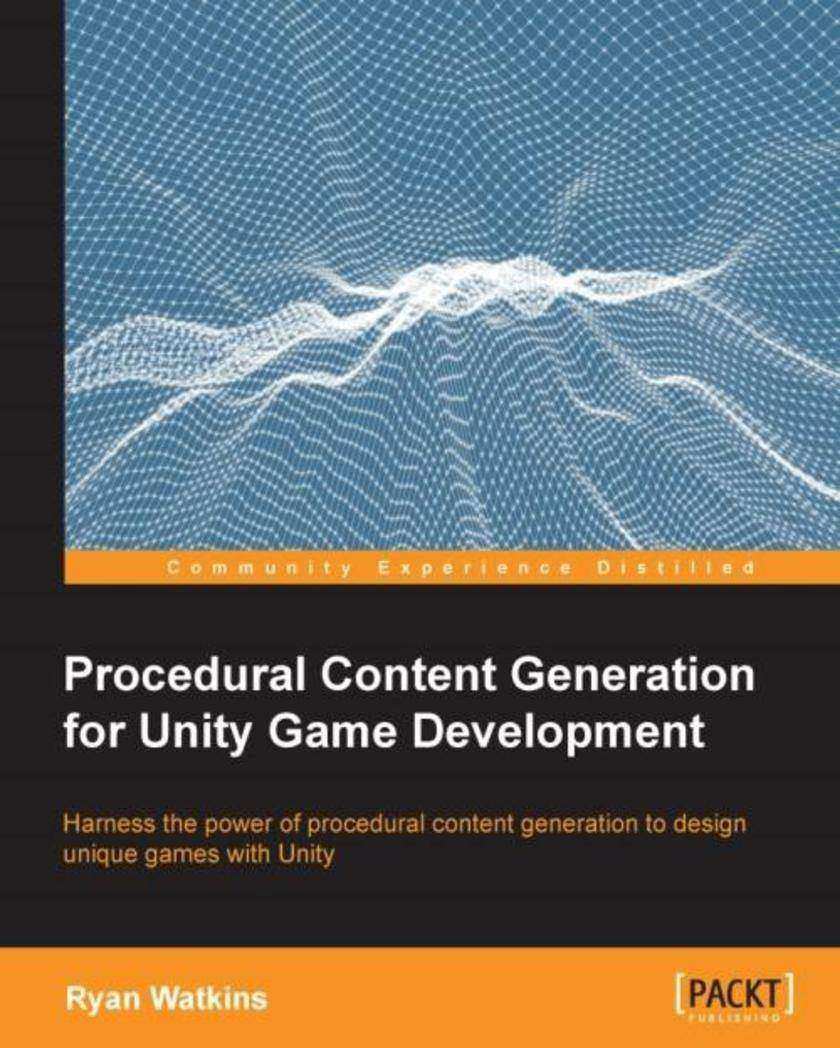
Procedural Content Generation for Unity Game Development
¥90.46
Harness the power of procedural content generation to design unique games with UnityAbout This BookLearn the basics of PCG developmentDevelop a 2D game from start to finishExplore all the different ways PCG can be applied in gamesWho This Book Is ForThis book is for Unity game developers, especially those who work on indie games. You should be familiar with Unity and C# *ing but you'll be able to jump in and start learning PCG straightaway.What You Will LearnUnderstand the theory of Procedural Content GenerationLearn the uses of Pseudo Random NumbersCreate reusable algorithm designs for PCGEvaluate the data structures for PCGDevelop smaller games with larger amounts of contentGenerate content instead of spending time designing every minute detailLearn when and how to add PCG to your gameLearn the fundamental techniques of PCGIn DetailProcedural Content Generation is a process by which game content is developed using computer algorithms, rather than through the manual efforts of game developers. This book teaches readers how to develop algorithms for procedural generation that they can use in their own games. These concepts are put into practice using C# and Unity is used as the game development engine.This book provides the fundamentals of learning and continued learning using PCG. You'll discover the theory of PCG and the mighty Pseudo Random Number Generator. Random numbers such as die rolls and card drafting provide the chance factor that makes games fun and supplies spontaneity. This book also takes you through the full development of a 2D game.Starting with level generation, you'll learn how PCG can make the game environment for you. You'll move into item generation and learn the different techniques to procedurally create game items. Thereafter, you'll be guided through the more abstract PCG areas such as scaling difficulty to the player and even generating music! The book helps you set up systems within your games where algorithms create computationally generated levels, art assets, quests, stories, characters, and weapons; these can substantially reduce the burden of manually creating every aspect of the game.Finally, you'll get to try out your new PCG skills on 3D terrain generation.Style and approachAn easy-to-follow, project-based guide that will let you build a complete game by the end of the book using PCG.
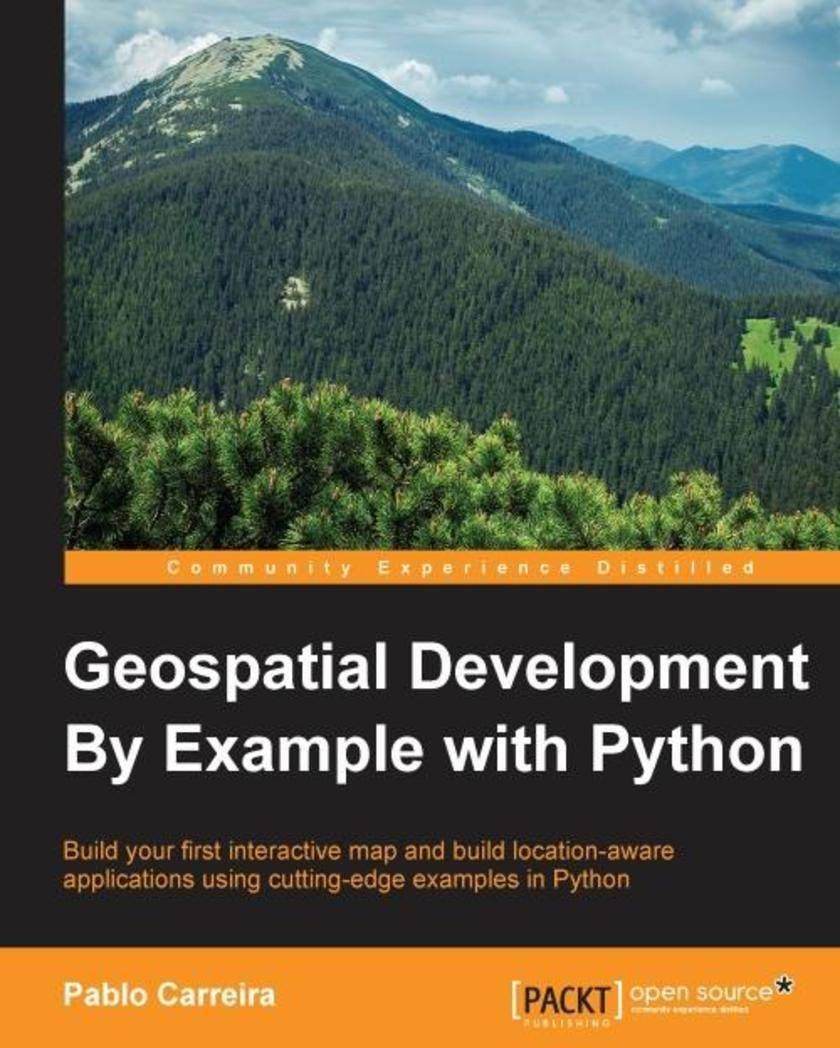
Geospatial Development By Example with Python
¥90.46
Build your first interactive map and build location-aware applications using cutting-edge examples in PythonAbout This BookLearn the full geo-processing workflow using Python with open source packagesCreate press-quality styled maps and data visualization with high-level and reusable codeProcess massive datasets efficiently using parallel processingWho This Book Is ForGeospatial Development By Example with Python is intended for beginners or advanced developers in Python who want to work with geographic data. The book is suitable for professional developers who are new to geospatial development, for hobbyists, or for data scientists who want to move into some simple development.What You Will LearnPrepare a development environment with all the tools needed for geo-processing with PythonImport point data and structure an application using Python’s resourcesCombine point data from multiple sources, creating intuitive and functional representations of geographic objectsFilter data by coordinates or attributes easily using pure PythonMake press-quality and replicable maps from any dataDownload, transform, and use remote sensing data in your mapsMake calculations to extract information from raster data and show the results on beautiful mapsHandle massive amounts of data with advanced processing techniquesProcess huge satellite images in an efficient wayOptimize geo-processing times with parallel processingIn DetailFrom Python programming good practices to the advanced use of analysis packages, this book teaches you how to write applications that will perform complex geoprocessing tasks that can be replicated and reused.Much more than simple *s, you will write functions to import data, create Python classes that represent your features, and learn how to combine and filter them.With pluggable mechanisms, you will learn how to visualize data and the results of analysis in beautiful maps that can be batch-generated and embedded into documents or web pages.Finally, you will learn how to consume and process an enormous amount of data very efficiently by using advanced tools and modern computers’ parallel processing capabilities.Style and approachThis easy-to-follow book is filled with hands-on examples that illustrate the construction of three sample applications of how to write reusable and interconnected Python code for geo-processing.
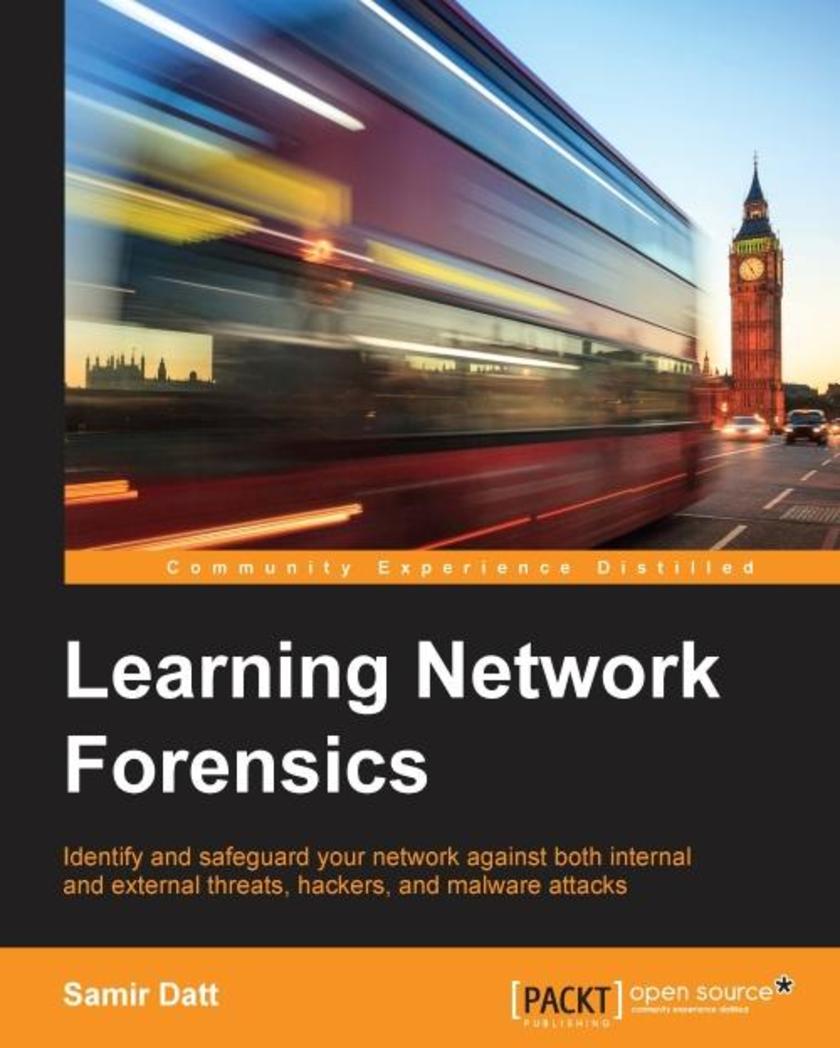
Learning Network Forensics
¥90.46
Identify and safeguard your network against both internal and external threats, hackers, and malware attacksAbout This BookLay your hands on physical and virtual evidence to understand the sort of crime committed by capturing and analyzing network trafficConnect the dots by understanding web proxies, firewalls, and routers to close in on your suspectA hands-on guide to help you solve your case with malware forensic methods and network behaviorsWho This Book Is ForIf you are a network administrator, system administrator, information security, or forensics professional and wish to learn network forensic to track the intrusions through network-based evidence, then this book is for you. Basic knowledge of Linux and networking concepts is expected.What You Will LearnUnderstand Internetworking, sources of network-based evidence and other basic technical fundamentals, including the tools that will be used throughout the bookAcquire evidence using traffic acquisition software and know how to manage and handle the evidencePerform packet analysis by capturing and collecting data, along with content analysisLocate wireless devices, as well as capturing and analyzing wireless traffic data packetsImplement protocol analysis and content matching; acquire evidence from NIDS/NIPSAct upon the data and evidence gathered by being able to connect the dots and draw links between various eventsApply logging and interfaces, along with analyzing web proxies and understanding encrypted web trafficUse IOCs (Indicators of Compromise) and build real-world forensic solutions, dealing with malwareIn DetailWe live in a highly networked world. Every digital device—phone, tablet, or computer is connected to each other, in one way or another. In this new age of connected networks, there is network crime. Network forensics is the brave new frontier of digital investigation and information security professionals to extend their abilities to catch miscreants on the network.The book starts with an introduction to the world of network forensics and investigations. You will begin by getting an understanding of how to gather both physical and virtual evidence, intercepting and analyzing network data, wireless data packets, investigating intrusions, and so on. You will further explore the technology, tools, and investigating methods using malware forensics, network tunneling, and behaviors. By the end of the book, you will gain a complete understanding of how to successfully close a case.Style and approachAn easy-to-follow book filled with real-world case studies and applications. Each topic is explained along with all the practical tools and software needed, allowing the reader to use a completely hands-on approach.
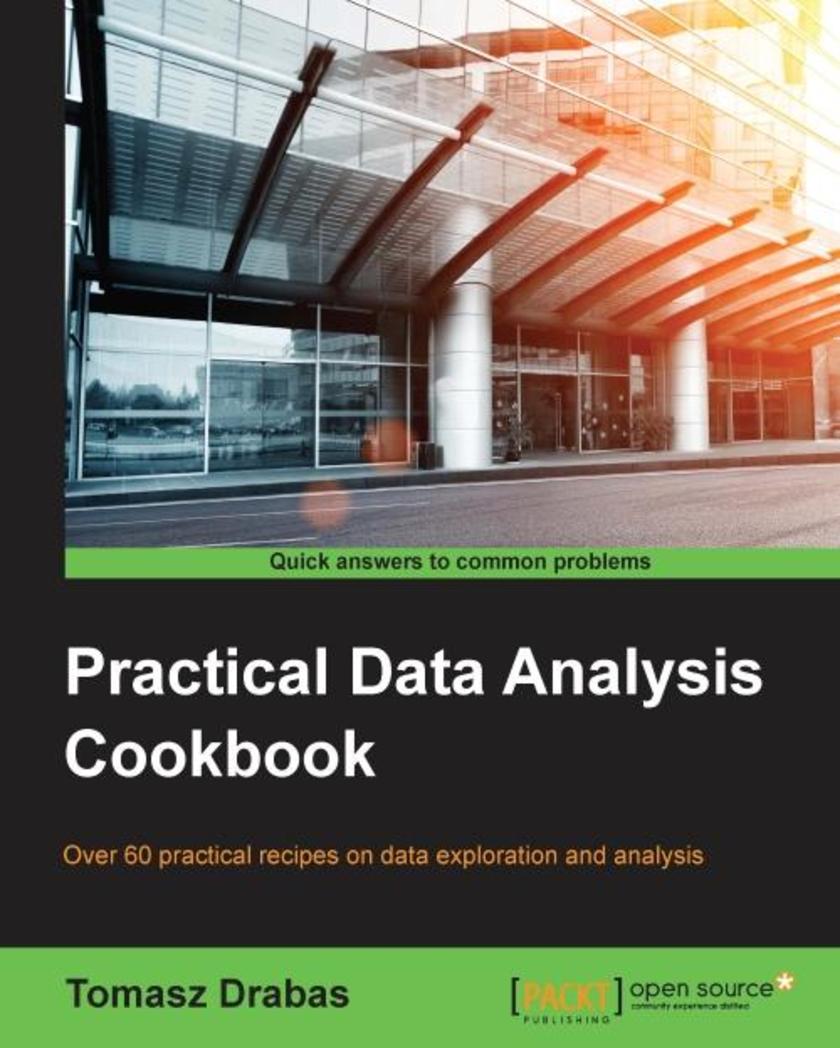
Practical Data Analysis Cookbook
¥90.46
Over 60 practical recipes on data exploration and analysis About This Book Clean dirty data, extract accurate information, and explore the relationships between variables Forecast the output of an electric plant and the water flow of American rivers using pandas, NumPy, Statsmodels, and scikit-learn Find and extract the most important features from your dataset using the most efficient Python libraries Who This Book Is For If you are a beginner or intermediate-level professional who is looking to solve your day-to-day, analytical problems with Python, this book is for you. Even with no prior programming and data analytics experience, you will be able to finish each recipe and learn while doing so. What You Will Learn Read, clean, transform, and store your data usng Pandas and OpenRefine Understand your data and explore the relationships between variables using Pandas and D3.js Explore a variety of techniques to classify and cluster outbound marketing campaign calls data of a bank using Pandas, mlpy, NumPy, and Statsmodels Reduce the dimensionality of your dataset and extract the most important features with pandas, NumPy, and mlpy Predict the output of a power plant with regression models and forecast water flow of American rivers with time series methods using pandas, NumPy, Statsmodels, and scikit-learn Explore social interactions and identify fraudulent activities with graph theory concepts using NetworkX and Gephi Scrape Internet web pages using urlib and BeautifulSoup and get to know natural language processing techniques to classify movies ratings using NLTK Study simulation techniques in an example of a gas station with agent-based modeling In Detail Data analysis is the process of systematically applying statistical and logical techniques to describe and illustrate, condense and recap, and evaluate data. Its importance has been most visible in the sector of information and communication technologies. It is an employee asset in almost all economy sectors. This book provides a rich set of independent recipes that dive into the world of data analytics and modeling using a variety of approaches, tools, and algorithms. You will learn the basics of data handling and modeling, and will build your skills gradually toward more advanced topics such as simulations, raw text processing, social interactions analysis, and more. First, you will learn some easy-to-follow practical techniques on how to read, write, clean, reformat, explore, and understand your data—arguably the most time-consuming (and the most important) tasks for any data scientist. In the second section, different independent recipes delve into intermediate topics such as classification, clustering, predicting, and more. With the help of these easy-to-follow recipes, you will also learn techniques that can easily be expanded to solve other real-life problems such as building recommendation engines or predictive models. In the third section, you will explore more advanced topics: from the field of graph theory through natural language processing, discrete choice modeling to simulations. You will also get to expand your knowledge on identifying fraud origin with the help of a graph, scrape Internet websites, and classify movies based on their reviews. By the end of this book, you will be able to efficiently use the vast array of tools that the Python environment has to offer. Style and approach This hands-on recipe guide is divided into three sections that tackle and overcome real-world data modeling problems faced by data analysts/scientist in their everyday work. Each independent recipe is written in an easy-to-follow and step-by-step fashion.
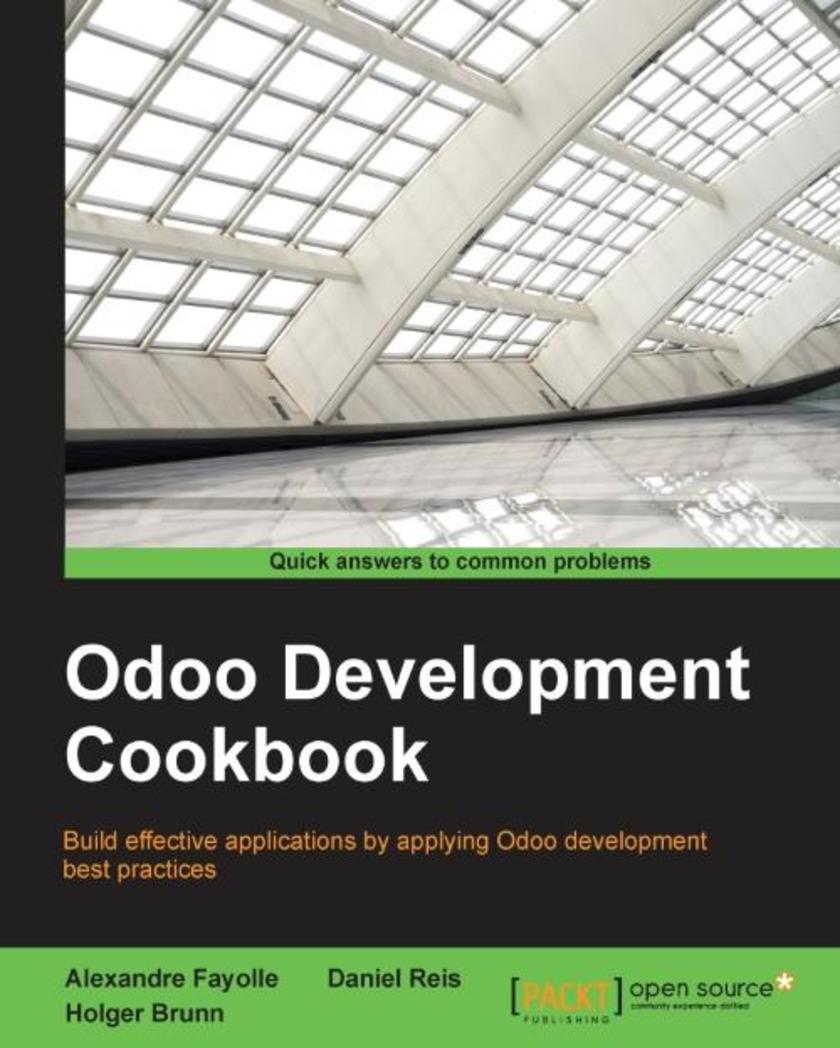
Odoo Development Cookbook
¥90.46
Build effective applications by applying Odoo development best practices About This Book Each recipe stands by itself as much as possible, so that you can jump straight into the topics you prefer The recipes included cover all the major development areas of Odoo and the most important techniques explained through real-life projects From seasoned authors, learn the tricks of becoming a productive developer with the Odoo framework Who This Book Is For If you are a Python developer who wants to learn or consolidate your Odoo development skills, then this book is for you! Some experience with the JavaScript programming language and web development is required to fully benefit from the front-end chapters. What You Will Learn Install and manage Odoo environments and instances Use Models to define your application's data structures Add business logic to your applications Implement automated tests and debug Odoo apps Use back-end views to create a user interface Get to know about the access security model and internationalization features Develop front-end website features Extend the web client with new widgets and features In Detail Odoo is a full-featured open source ERP with a focus on extensibility. The flexibility and sustainability of open source is also a key selling point of Odoo. It is built on a powerful framework for rapid application development, both for back-end applications and front-end websites. The book starts by covering Odoo installation and administration, and provides a gentle introduction to application development. It then dives deep into several of the areas that an experienced developer will need to use. You’ll learn implement business logic, adapt the UI, and extend existing features. Style and Approach These practical and easy-to-follow recipes are presented step-by-step, with dozens of hands-on recipes to boost your Odoo skills. This book can also be used as a reference guide for your daily work.
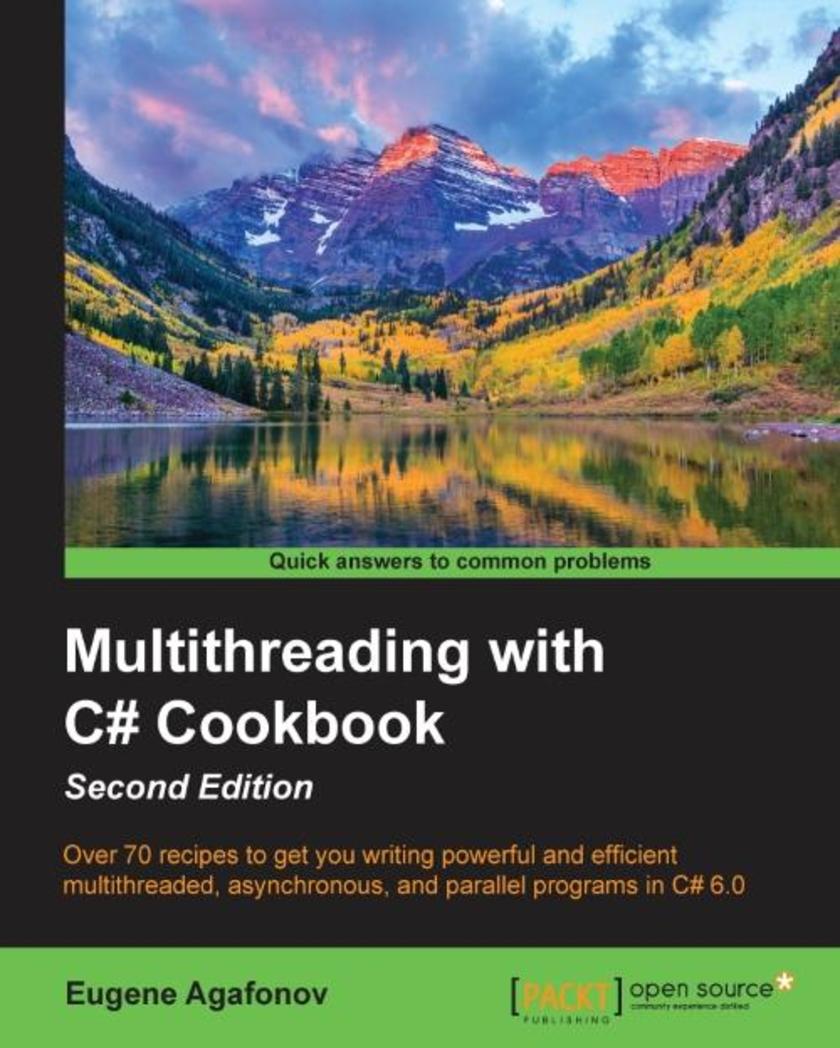
Multithreading with C# Cookbook - Second Edition
¥90.46
Over 70 recipes to get you writing powerful and efficient multithreaded, asynchronous, and parallel programs in C# 6.0 About This Book Rewritten and updated to take advantage of the latest C# 6 features Learn about multithreaded, asynchronous, and parallel programming through hands-on, code-first examples Use these recipes to build fast, scalable, and reliable applications in C# Who This Book Is For This book is aimed at those who are new to multithreaded programming, and who are looking for a quick and easy way to get started. It is assumed that you have some experience in C# and .NET already, and you should also be familiar with basic computer science terminology and basic algorithms and data structures. What You Will Learn Use C# 6.0 asynchronous language features Work with raw threads, synchronize threads, and coordinate their work Develop your own asynchronous API with Task Parallel Library Work effectively with a thread pool Scale up your server application with I/O threads Parallelize your LINQ queries with PLINQ Use common concurrent collections Apply different parallel programming patterns Use Reactive Extensions to run asynchronous operations and manage their options In Detail Multi-core processors are synonymous with computing speed and power in today’s world, which is why multithreading has become a key concern for C# developers. Multithreaded code helps you create effective, scalable, and responsive applications. This is an easy-to-follow guide that will show you difficult programming problems in context. You will learn how to solve them with practical, hands-on, recipes. With these recipes, you’ll be able to start creating your own scalable and reliable multithreaded applications. Starting from learning what a thread is, we guide you through the basics and then move on to more advanced concepts such as task parallel libraries, C# asynchronous functions, and much more. Rewritten to the latest C# specification, C# 6, and updated with new and modern recipes to help you make the most of the hardware you have available, this book will help you push the boundaries of what you thought possible in C#. Style and approach This is an easy-to-follow guide full of hands-on examples of real-world multithreading tasks. Each topic is explained and placed in context, and for the more inquisitive, there are also more in-depth details of the concepts used.
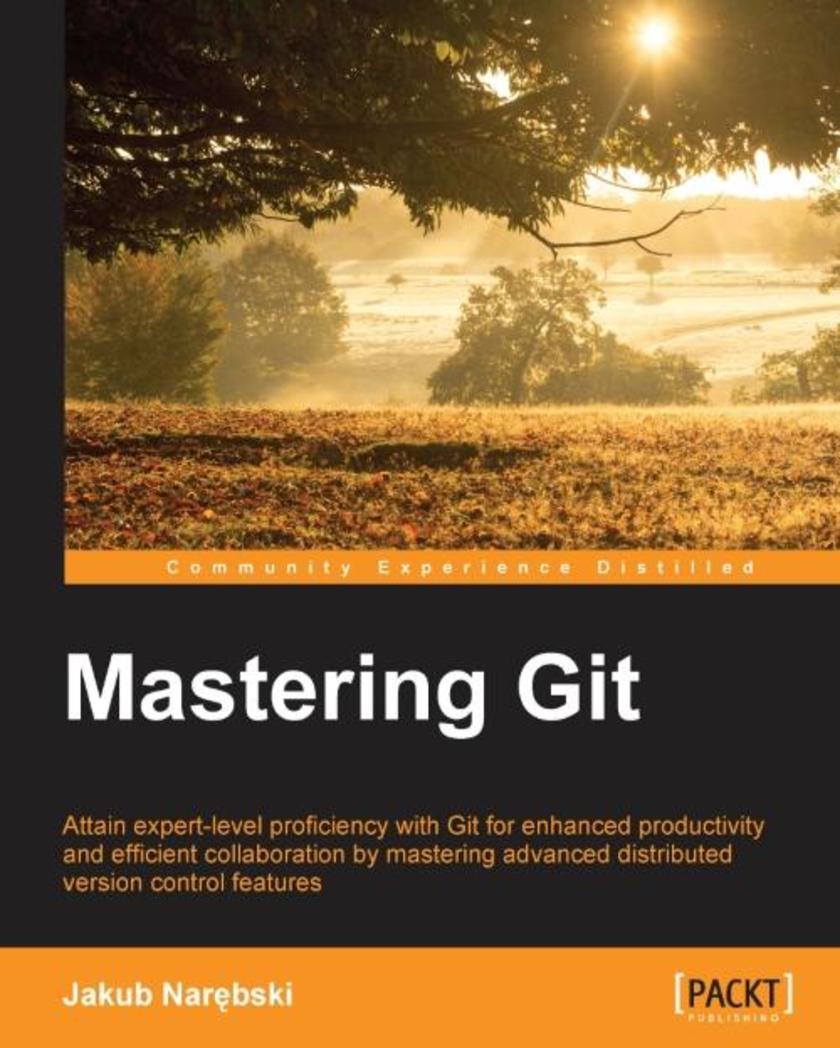
Mastering Git
¥90.46
Attain expert-level proficiency with Git for enhanced productivity and efficient collaboration by mastering advanced distributed version control features About This Book Set up Git for solo and collaborative development Harness the full power of Git version control system to customize Git behavior, manipulate history, integrate external tools and explore platform shortcuts A detailed guide, which explains how to apply advanced Git techniques and workflows and ways to handle submodules Who This Book Is For If you are a Git user with reasonable knowledge of Git and familiarity with basic concepts such as branching, merging, staging, and workflows, this is the book for you. Basic knowledge of installing Git and software configuration management concepts is essential. What You Will Learn Explore project history, find revisions using different criteria, and filter and format how history looks Manage your working directory and staging area for commits and interactively create new revisions and amend them Set up repositories and branches for collaboration Submit your own contributions and integrate contributions from other developers via merging or rebasing Customize Git behavior system-wide, on a per-user, per-repository, and per-file basis Take up the administration and set up of Git repositories, configure access, find and recover from repository errors, and perform repository maintenance Chose a workflow and configure and set up support for the chosen workflow In Detail Git is one of the most popular types of Source Code Management (SCM) and Distributed Version Control System (DVCS). Despite the powerful and versatile nature of the tool enveloping strong support for nonlinear development and the ability to handle large projects efficiently, it is a complex tool and often regarded as “user-unfriendly”. Getting to know the ideas and concepts behind the architecture of Git will help you make full use of its power and understand its behavior. Learning the best practices and recommended workflows should help you to avoid problems and ensure trouble-free development. The book scope is meticulously designed to help you gain deeper insights into Git's architecture, its underlying concepts, behavior, and best practices. Mastering Git starts with a quick implementation example of using Git for a collaborative development of a sample project to establish the foundation knowledge of Git operational tasks and concepts. Furthermore, as you progress through the book, the tutorials provide detailed de*ions of various areas of usage: from archaeology, through managing your own work, to working with other developers. This book also helps augment your understanding to examine and explore project history, create and manage your contributions, set up repositories and branches for collaboration in centralized and distributed version control, integrate work from other developers, customize and extend Git, and recover from repository errors. By exploring advanced Git practices, you will attain a deeper understanding of Git’s behavior, allowing you to customize and extend existing recipes and write your own. Style and approach Step-by-step instructions and useful information make this book the ultimate guide to understanding and mastering Git. This book will show road to mastery example by example, while explaining mental model of Git. The Introduction section covers the 'Essentials' just for refreshing the basics. The main highlight is that the concepts are based on HOW the technology/framework works and not just practical 'WHAT to do'.
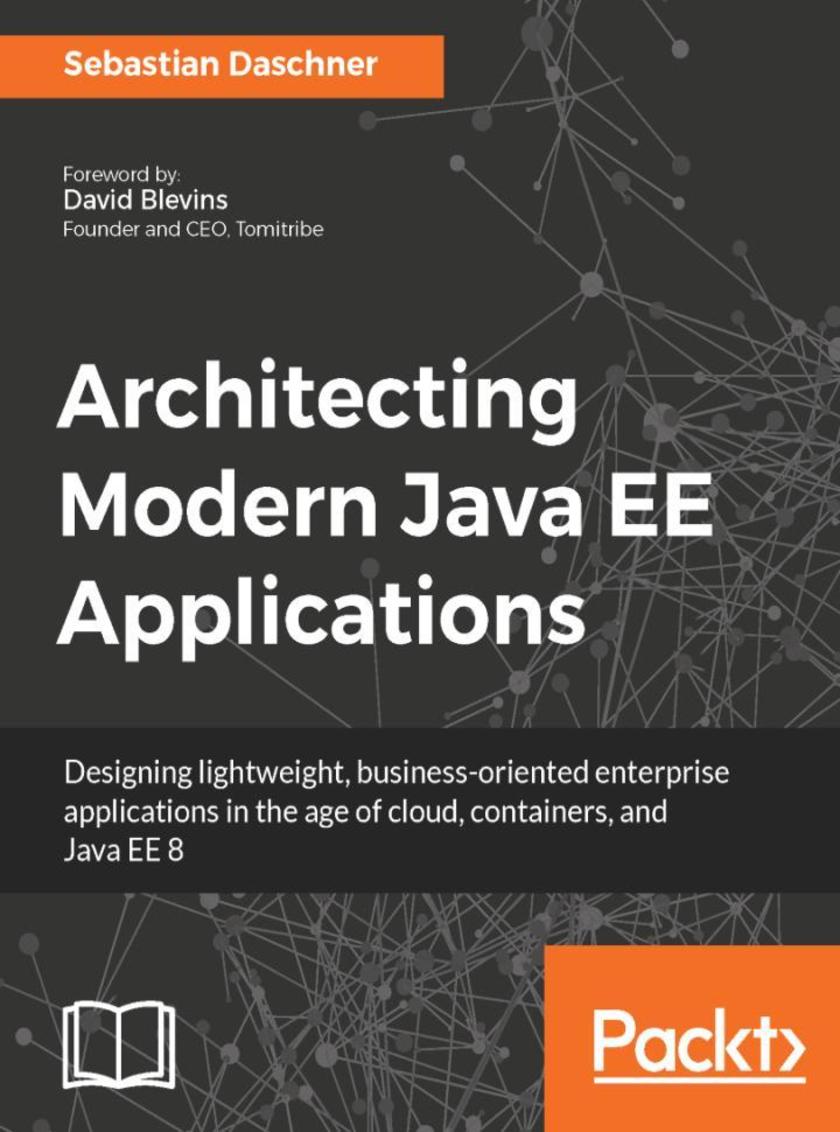
Architecting Modern Java EE Applications
¥90.46
Find out how to craft effective, business-oriented Java EE 8 applications that target customer’s demands in the age of Cloud platforms and container technology. About This Book ? Understand the principles of modern Java EE and how to realize effective architectures ? Gain knowledge of how to design enterprise software in the age of automation, Continuous Delivery and Cloud platforms ? Learn about the reasoning and motivations behind state-of-the-art enterprise Java technology, that focuses on business Who This Book Is For This book is for experienced Java EE developers who are aspiring to become the architects of enterprise-grade applications, or software architects who would like to leverage Java EE to create effective blueprints of applications. What You Will Learn ? What enterprise software engineers should focus on ? Implement applications, packages, and components in a modern way ? Design and structure application architectures ? Discover how to realize technical and cross-cutting aspects ? Get to grips with containers and container orchestration technology ? Realize zero-dependency, 12-factor, and Cloud-native applications ? Implement automated, fast, reliable, and maintainable software tests ? Discover distributed system architectures and their requirements In Detail Java EE 8 brings with it a load of features, mainly targeting newer architectures such as microservices, modernized security APIs, and cloud deployments. This book will teach you to design and develop modern, business-oriented applications using Java EE 8. It shows how to structure systems and applications, and how design patterns and Domain Driven Design aspects are realized in the age of Java EE 8. You will learn about the concepts and principles behind Java EE applications, and how to effect communication, persistence, technical and cross-cutting concerns, and asynchronous behavior. This book covers Continuous Delivery, DevOps, infrastructure-as-code, containers, container orchestration technologies, such as Docker and Kubernetes, and why and especially how Java EE fits into this world. It also covers the requirements behind containerized, zero-dependency applications and how modern Java EE application servers support these approaches. You will also learn about automated, fast, and reliable software tests, in different test levels, scopes, and test technologies. This book covers the prerequisites and challenges of distributed systems that lead to microservice, shared-nothing architectures. The challenges and solutions of consistency versus scalability will further lead us to event sourcing, event-driven architectures, and the CQRS principle. This book also includes the nuts and bolts of application performance as well as how to realize resilience, logging, monitoring and tracing in a modern enterprise world. Last but not least the demands of securing enterprise systems are covered. By the end, you will understand the ins and outs of Java EE so that you can make critical design decisions that not only live up to, but also surpass your clients' expectations. Style and approach This book focuses on solving business problems and meeting customer demands in the enterprise world. It covers how to create enterprise applications with reasonable technology choices, free of cargo-cult and over-engineering. The aspects shown in this book not only demonstrate how to realize a certain solution, but also explain its motivations and reasoning.
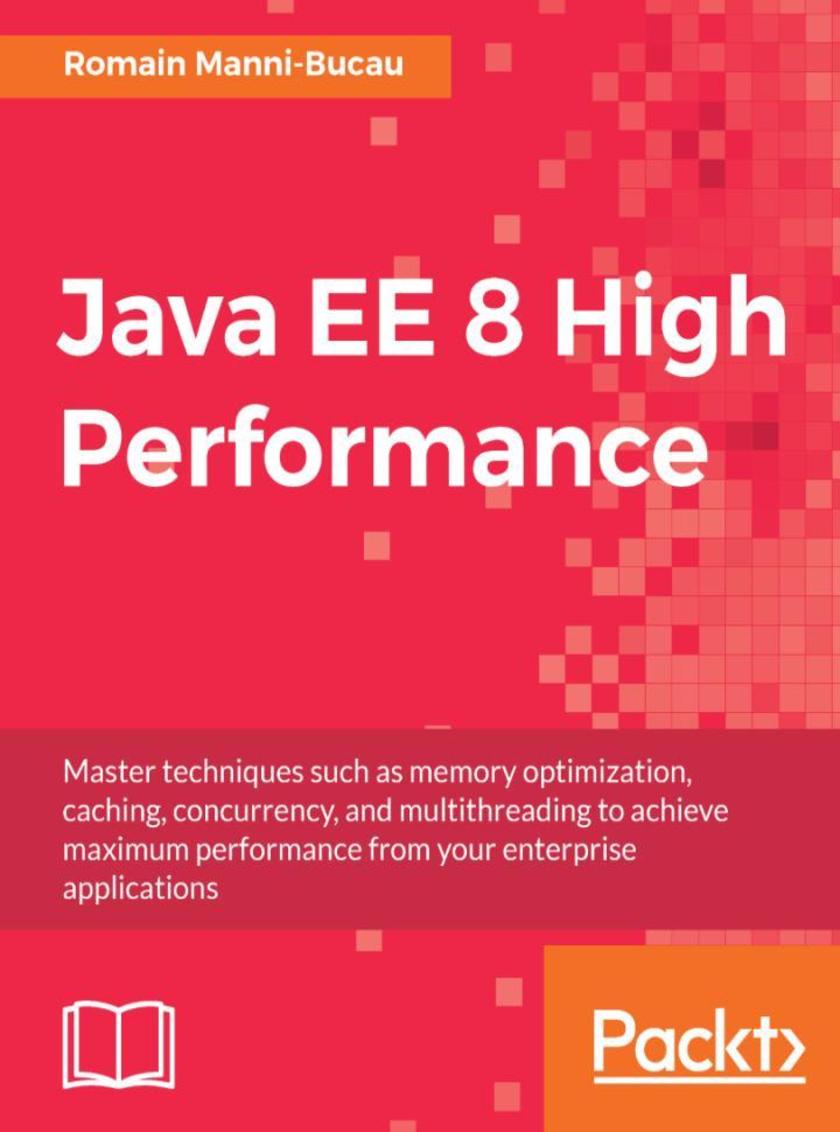
Java EE 8 High Performance
¥90.46
Get more control of your applications performances in development and production and know how to meet your Service Level Agreement on critical microservices. About This Book ? Learn how to write a JavaEE application with performance constraints (Service Level Agreement—SLA) leveraging the platform ? Learn how to identify bottlenecks and hotspots in your application to fix them ? Ensure that you are able to continuously control your performance in production and during development Who This Book Is For If you're a Java developer looking to improve the performance of your code or simply wanting to take your skills up to the next level, then this book is perfect for you. What You Will Learn ? Identify performance bottlenecks in an application ? Locate application hotspots using performance tools ? Understand the work done under the hood by EE containers and its impact on performance ? Identify common patterns to integrate with Java EE applications ? Implement transparent caching on your applications ? Extract more information from your applications using Java EE without modifying existing code ? Ensure constant performance and eliminate regression In Detail The ease with which we write applications has been increasing, but with this comes the need to address their performance. A balancing act between easily implementing complex applications and keeping their performance optimal is a present-day need. In this book, we explore how to achieve this crucial balance while developing and deploying applications with Java EE 8. The book starts by analyzing various Java EE specifications to identify those potentially affecting performance adversely. Then, we move on to monitoring techniques that enable us to identify performance bottlenecks and optimize performance metrics. Next, we look at techniques that help us achieve high performance: memory optimization, concurrency, multi-threading, scaling, and caching. We also look at fault tolerance solutions and the importance of logging. Lastly, you will learn to benchmark your application and also implement solutions for continuous performance evaluation. By the end of the book, you will have gained insights into various techniques and solutions that will help create high-performance applications in the Java EE 8 environment. Style and approach This book will cover vital concepts implemented through a sample application built throughout the book. This will enable you to apply these concepts to suit your software requirements.
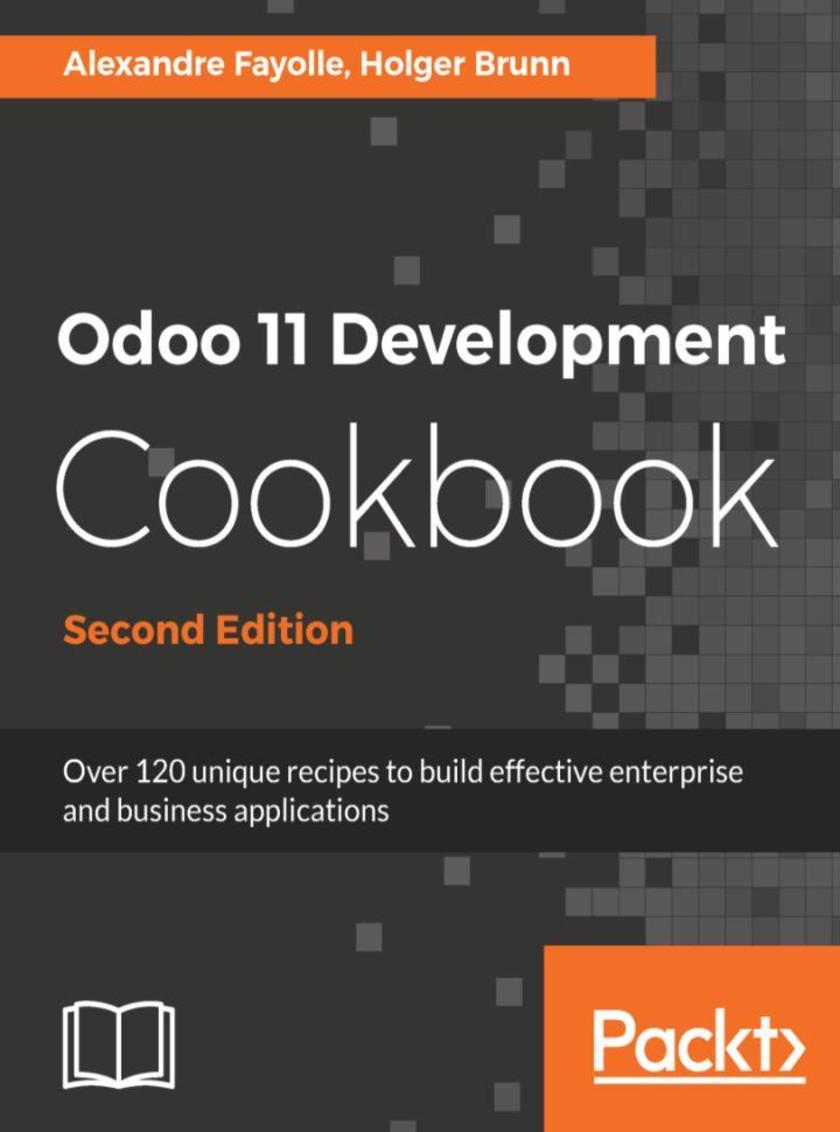
Odoo 11 Development Cookbook - Second Edition
¥90.46
Create fast and efficient server-side applications using the latest features of Odoo v11 About This Book ? Get the most up-to-date guide on Odoo 11 to create custom and reusable modules ? Interconnect your application with other systems by implementing web APIs ? Understand the mechanisms powering the Odoo framework to build robust enterprises Who This Book Is For If you're a Python developer and want to develop highly efficient business applications with the latest Odoo framework (or if you just want a hands on problem solution book for all your Odoo Development related issues), this book is for you! Some experience with the JavaScript programming language and web development is required to get the most out of this book. What You Will Learn ? Install and manage Odoo environments and instances ? Use models to define your application's data structures ? Add business logic to your applications ? Add automated tests and learn how to debug Odoo apps ? Learn about the access security model and internationalization features ? Customize websites built with Odoo, by writing your own templates and providing new snippets for use in the website builder ? Extend the web client with new widgets and make RPC calls to the server In Detail Odoo is a full-featured open source ERP with a focus on extensibility. The flexibility and sustainability of open source are also a key selling point of Odoo. It is built on a powerful framework for rapid application development, both for back-end applications and front-end websites. Version 11 offers better usability and speed: a new design (as compared to the current Odoo Enterprise version) and a mobile interface. The book starts by covering Odoo installation and administration and Odoo Server deployment. It then delves into the implementation of Odoo modules, the different inheritance models available in Odoo. You will then learn how to define access rules for your data; how to make your application available in different languages; how to expose your data models to end users on the back end and on the front end; and how to create beautiful PDF versions of your data. By the end of the book, you will have a thorough knowledge of Odoo and will be able to build effective applications by applying Odoo development best practices Style and Approach This recipe-based practical guide presents each topic with step-by-step instructions on how you can create fast and efficient server-side applications using the latest features of Odoo v11
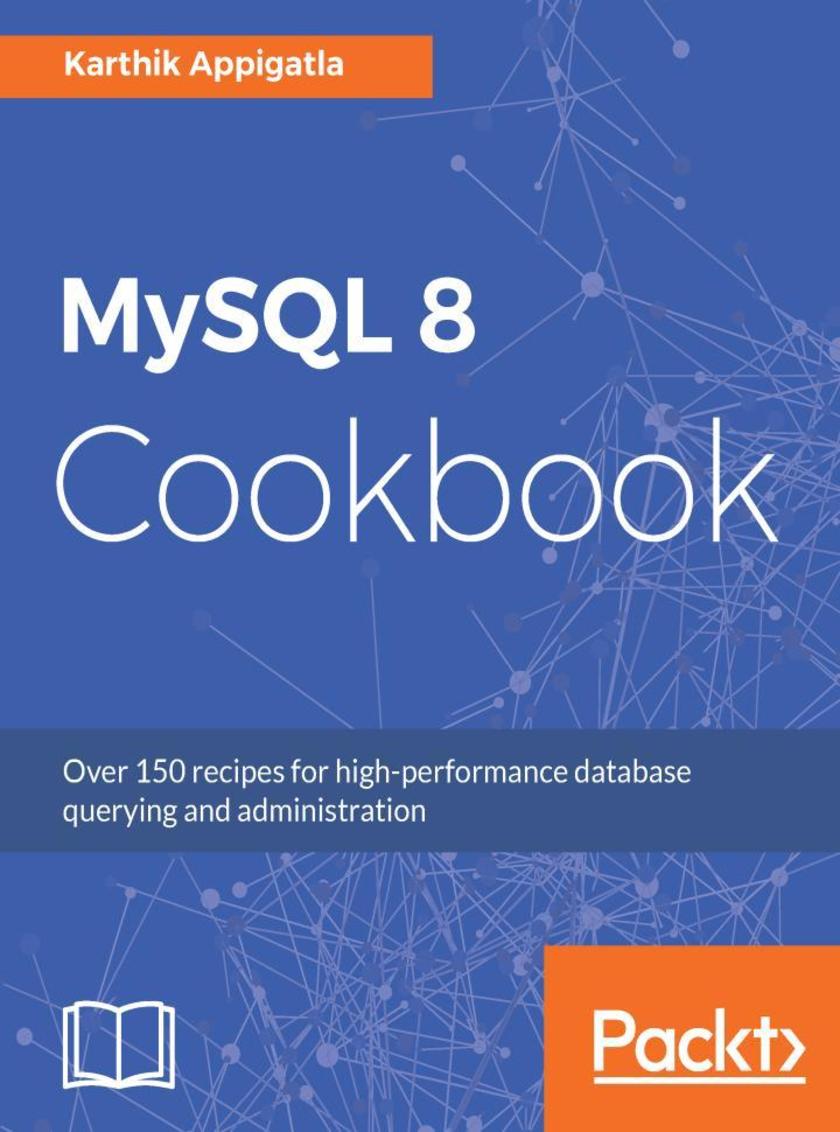
MySQL 8 Cookbook
¥90.46
Design and administer enterprise-grade MySQL 8 solutions About This Book ? Store, retrieve, and manipulate your data using the latest MySQL 8 features ? Practical recipes on effective administration in MySQL, with a focus on security, performance tuning, troubleshooting, and more ? Contains tips, tricks, and best practices for designing, developing, and administering your MySQL 8 database solution without any hassle Who This Book Is For If you are a MySQL developer or administrator looking for quick, handy solutions to solve the most common and not-so-common problems in MySQL, this book is for you. MySQL DBAs looking to get up-to-speed with the latest MySQL 8 development and administration features will also find this book very useful. Prior knowledge of Linux and RDBMS is desirable. What You Will Learn ? Install and configure your MySQL 8 instance without any hassle ? Get to grips with new features of MySQL 8 like CTE, Window functions and many more ? Perform backup tasks, recover data and set up various replication topologies for your database ? Maximize performance by using new features of MySQL 8 like descending indexes, controlling query optimizer and resource groups ? Learn how to use general table space to suit the SaaS or multi-tenant applications ? Analyze slow queries using performance schema, sys schema and third party tools ? Manage and monitor your MySQL instance and implement efficient performance-tuning tasks In Detail MySQL is one of the most popular and widely used relational databases in the World today. The recently released MySQL 8 version promises to be better and more efficient than ever before. This book contains everything you need to know to be the go-to person in your organization when it comes to MySQL. Starting with a quick installation and configuration of your MySQL instance, the book quickly jumps into the querying aspects of MySQL. It shows you the newest improvements in MySQL 8 and gives you hands-on experience in managing high-transaction and real-time datasets. If you've already worked with MySQL before and are looking to migrate your application to MySQL 8, this book will also show you how to do that. The book also contains recipes on efficient MySQL administration, with tips on effective user management, data recovery, security, database monitoring, performance tuning, troubleshooting, and more. With quick solutions to common and not-so-common problems you might encounter while working with MySQL 8, the book contains practical tips and tricks to give you the edge over others in designing, developing, and administering your database effectively. Style and approach This book takes a recipe-based approach to tackling the pain points of SQL developers. It is a comprehensive book full of solutions to common problems faced by SQL administrators and developers alike.
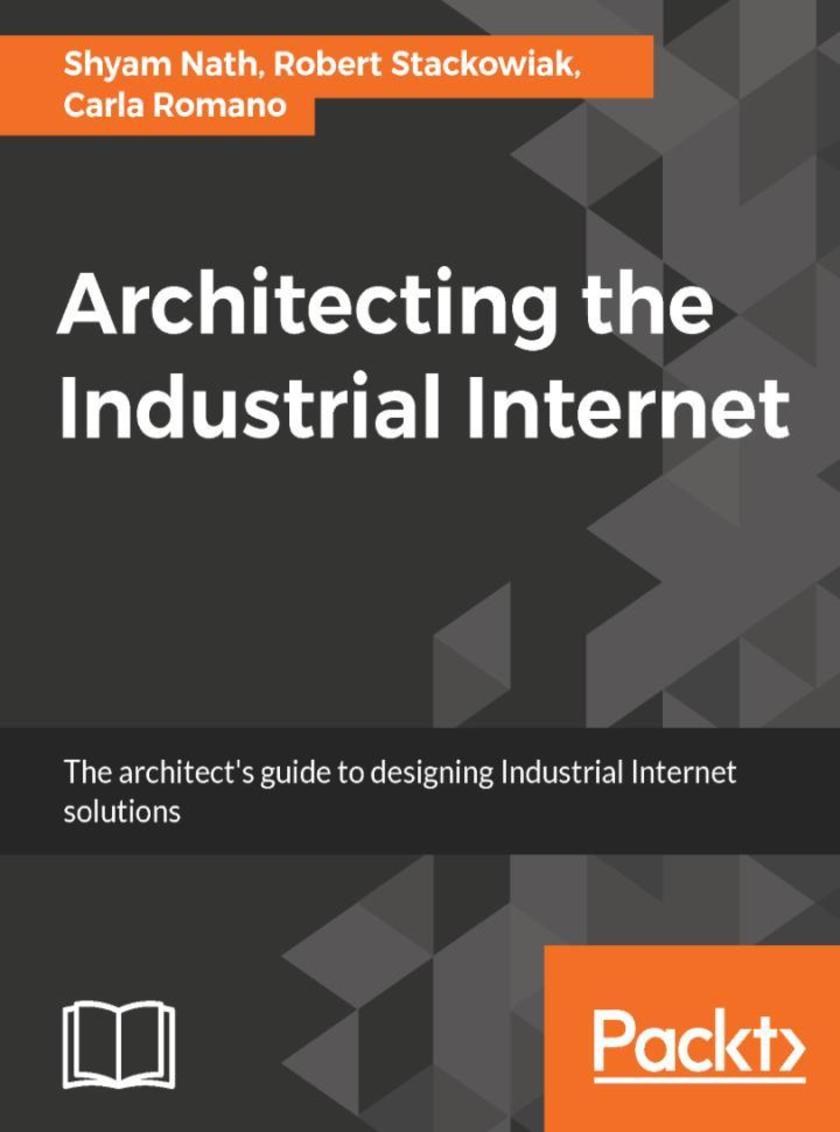
Architecting the Industrial Internet
¥90.46
Learn the ins and outs of the Industrial Internet of Things through subjects ranging from its history and evolution, right up to what the future holds. About This Book ? Define solutions that can connect existing systems and newer cloud-based solutions to thousands of thousands of edge devices and industrial machines ? Identify, define, and justify Industrial Internet of Things (IIoT) projects, and design an application that can connect to and control thousands of machines ? Leverage the power and features of a platform to monitor, perform analytics, and maintain the Industrial Internet Who This Book Is For Architects who are interested in learning how to define solutions for the Industrial Internet will benefit immensely from this book. Relevant architect roles include enterprise architects, business architects, information architects, cloud solution architects, software architects, and others. The content is also relevant for technically inclined line of business leaders investing in these solutions. What You Will Learn ? Learn the history of the Industrial Internet and why an architectural approach is needed ? Define solutions that can connect to and control thousands of edge devices and machines ? Understand the significance of working with line of business leadership and key metrics to be gathered ? Connect business requirements to the functional architecture ? Gain the right expectation as to the capabilities of Industrial Internet applications and how to assess them ? Understand what data and analytics components should be included in your architecture solution ? Understand deployment trade-offs, management and security considerations, and the impact of emerging technologies In Detail The Industrial Internet or the IIoT has gained a lot of traction. Many leading companies are driving this revolution by connecting smart edge devices to cloud-based analysis platforms and solving their business challenges in new ways. To ensure a smooth integration of such machines and devices, sound architecture strategies based on accepted principles, best practices, and lessons learned must be applied. This book begins by providing a bird's eye view of what the IIoT is and how the industrial revolution has evolved into embracing this technology. It then describes architectural approaches for success, gathering business requirements, and mapping requirements into functional solutions. In a later chapter, many other potential use cases are introduced including those in manufacturing and specific examples in predictive maintenance, asset tracking and handling, and environmental impact and abatement. The book concludes by exploring evolving technologies that will impact IIoT architecture in the future and discusses possible societal implications of the Industrial Internet and perceptions regarding these projects. By the end of this book, you will be better equipped to embrace the benefits of the burgeoning IIoT. Style and approach This book takes a comprehensive approach to the Industrial Internet, thoroughly acquainting the reader with the concepts and philosophy of the IIoT. It provides a basis for defining an IIoT solution in a thoughtful manner and creating what will be viewed as a successful project.
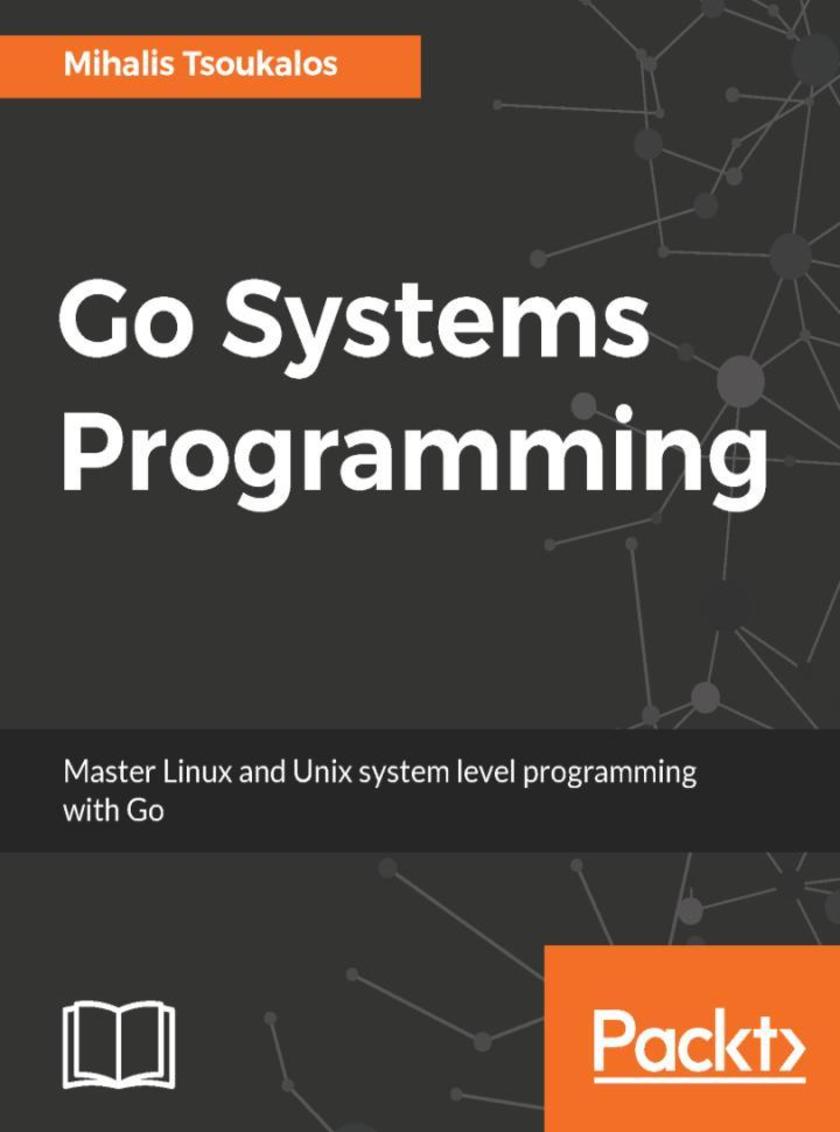
Go Systems Programming
¥90.46
Learning the new system’s programming language for all Unix-type systems About This Book ? Learn how to write system's level code in Golang, similar to Unix/Linux systems code ? Ramp up in Go quickly ? Deep dive into Goroutines and Go concurrency to be able to take advantage of Go server-level constructs Who This Book Is For Intermediate Linux and general Unix programmers. Network programmers from beginners to advanced practitioners. C and C++ programmers interested in different approaches to concurrency and Linux systems programming. What You Will Learn ? Explore the Go language from the standpoint of a developer conversant with Unix, Linux, and so on ? Understand Goroutines, the lightweight threads used for systems and concurrent applications ? Learn how to translate Unix and Linux systems code in C to Golang code ? How to write fast and lightweight server code ? Dive into concurrency with Go ? Write low-level networking code In Detail Go is the new systems programming language for Linux and Unix systems. It is also the language in which some of the most prominent cloud-level systems have been written, such as Docker. Where C programmers used to rule, Go programmers are in demand to write highly optimized systems programming code. Created by some of the original designers of C and Unix, Go expands the systems programmers toolkit and adds a mature, clear programming language. Traditional system applications become easier to write since pointers are not relevant and garbage collection has taken away the most problematic area for low-level systems code: memory management. This book opens up the world of high-performance Unix system applications to the beginning Go programmer. It does not get stuck on single systems or even system types, but tries to expand the original teachings from Unix system level programming to all types of servers, the cloud, and the web. Style and approach This is the first book to introduce Linux and Unix systems programming in Go, a field for which Go has actually been developed in the first place.
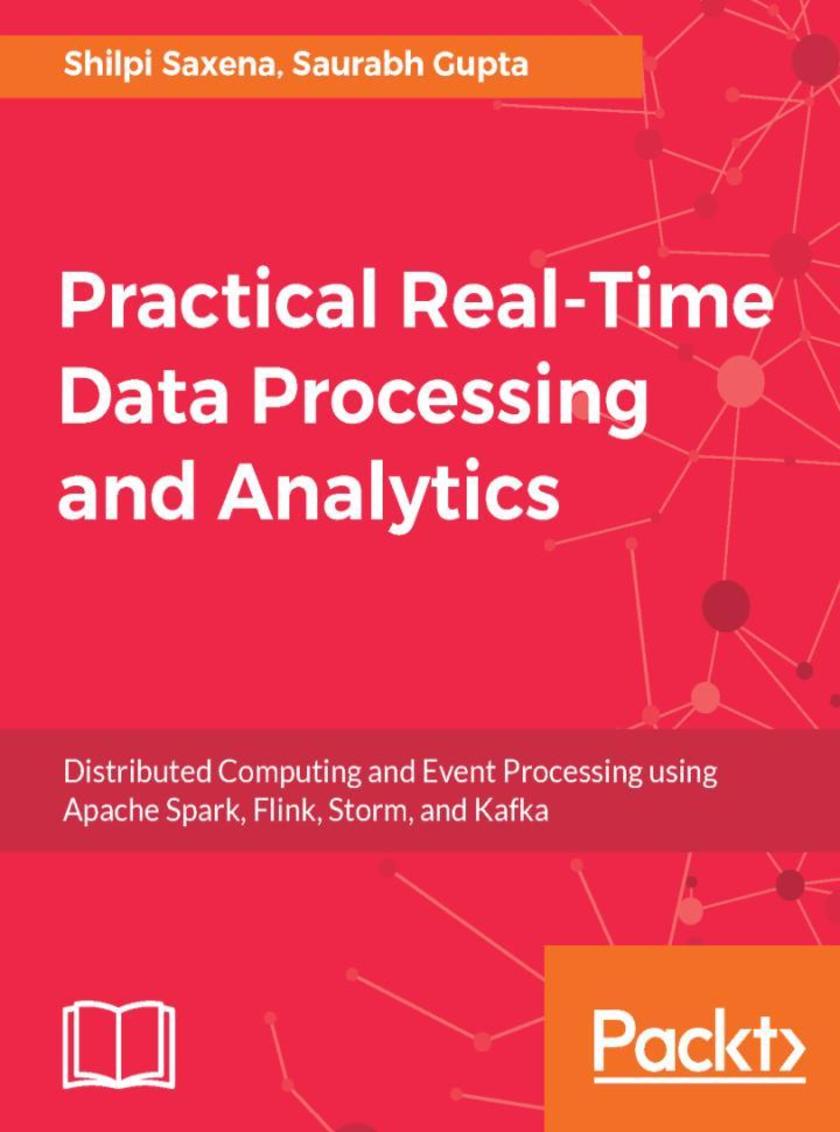
Practical Real-time Data Processing and Analytics
¥90.46
A practical guide to help you tackle different real-time data processing and analytics problems using the best tools for each scenario About This Book ? Learn about the various challenges in real-time data processing and use the right tools to overcome them ? This book covers popular tools and frameworks such as Spark, Flink, and Apache Storm to solve all your distributed processing problems ? A practical guide filled with examples, tips, and tricks to help you perform efficient Big Data processing in real-time Who This Book Is For If you are a Java developer who would like to be equipped with all the tools required to devise an end-to-end practical solution on real-time data streaming, then this book is for you. Basic knowledge of real-time processing would be helpful, and knowing the fundamentals of Maven, Shell, and Eclipse would be great. What You Will Learn ? Get an introduction to the established real-time stack ? Understand the key integration of all the components ? Get a thorough understanding of the basic building blocks for real-time solution designing ? Garnish the search and visualization aspects for your real-time solution ? Get conceptually and practically acquainted with real-time analytics ? Be well equipped to apply the knowledge and create your own solutions In Detail With the rise of Big Data, there is an increasing need to process large amounts of data continuously, with a shorter turnaround time. Real-time data processing involves continuous input, processing and output of data, with the condition that the time required for processing is as short as possible. This book covers the majority of the existing and evolving open source technology stack for real-time processing and analytics. You will get to know about all the real-time solution aspects, from the source to the presentation to persistence. Through this practical book, you’ll be equipped with a clear understanding of how to solve challenges on your own. We’ll cover topics such as how to set up components, basic executions, integrations, advanced use cases, alerts, and monitoring. You’ll be exposed to the popular tools used in real-time processing today such as Apache Spark, Apache Flink, and Storm. Finally, you will put your knowledge to practical use by implementing all of the techniques in the form of a practical, real-world use case. By the end of this book, you will have a solid understanding of all the aspects of real-time data processing and analytics, and will know how to deploy the solutions in production environments in the best possible manner. Style and Approach In this practical guide to real-time analytics, each chapter begins with a basic high-level concept of the topic, followed by a practical, hands-on implementation of each concept, where you can see the working and execution of it. The book is written in a DIY style, with plenty of practical use cases, well-explained code examples, and relevant screenshots and diagrams.




 购物车
购物车 个人中心
个人中心



